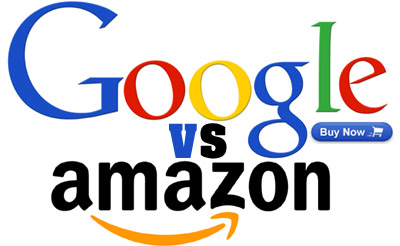The battle between Google Shopping and Amazon has certainly reached its apex points over the past few years. Off the top of the head, you might think that Amazon is number one and bows to no one.
However, Google has spruced up and refined its shopping platform over the years to be incredibly competent and simple to use. With its numerous revamps, Google Shopping has become one of the top product ad platforms, in many cases outshining even Amazon.
How Are They Similar?
Both giants collect a huge amount of data about their shoppers and use the data to keep customer interests in mind. Google and Amazon rely on data mining and ad placement to target specific product searches to customers.
On the multimedia side, both competitors have introduced products into nearly all media platforms. Google Chromecast vs. Amazon Fire TV Stick, Google Play vs. Amazon Kindle, and Google Express vs. Amazon Prime.
Companies and products have the ability to utilize an extensive ad campaign on both platforms, just with different processes.

How Do They Differ?
When it comes to functionality and implementation, the two platforms offer very different services. Google Shopping centers its product campaigns on PLA’s or product listing ads. These product listing ads are the driving force behind Google Shopping, which is managed within Google AdWords.
Bids are placed on the products themselves and Google applies the best keywords based on the bids. Since Amazon has discontinued its use of product ads, Google reigns supreme in retaining product search conversions.
In the world of paid advertising, Google PLA’s take up a majority of top 20% retail ad spend with Macy’s taking the top at $3,000,000 in the first quarter of 2015.
Much of the reason retailers prefer Google Shopping is due to the fact that PLA’s lead directly to retail websites. With Amazon, the products go through the Amazon platform which can benefit from Amazon’s search statistics at the cost of not being able to differentiate themselves from the clutter.
As well, companies forgo the opportunity of developing more sales leads from customers by directing customers to another site besides their own.
Why Not Just Use Amazon?
With Google Shopping, retailers have the ability to direct people to their own site. This means retailers:
- Can track where users come and go from and can track customer flow in Google Analytics and Adwords
- Retain customer data and can account for each customer who buys a product
- Learn about each customer as an individual
- Follow up on leads driven by each customer and gather key info like email addresses and other metadata
Once a retailer is on the Amazon marketplace, the retailer itself in essence becomes another vendor of Amazon, with no ability to retain any customer info or accumulate key customer data to follow up on leads.
While Amazon commands a strong percentage of those who purchase products directly from a platform, Google commands 64% of searches according to a 2015 study provided by comScore.
A key analysis taken from this study is the cannibalization of product search for Amazon. While many people go to Amazon to purchase directly, Google still gets a piece of the pie from links clicked.
Key Breakdowns
- Amazon benefits from top-of-the-list search postings for products in Google Search.
- Amazon and Google are closer than you might think in search volume, with Google ahead on a year-to-year basis. Marketing Analytics firm Jumpshot snapshotted 46% of product searches were on Amazon in 2015 vs Google’s 54%. This test was done from July 1st, 2015 to September 2015 with a population of around 120,000.
- Google Shopping utilizes its own AdWords platform which offers direct SEO functions related to product posting.
While both platforms offer access to a huge and diverse audience, the means in which they do so differ. Most top businesses place most of their resources in buying Google PLA’s which offer more flexible functionality and a more robust system.
While Amazon has the unique ability to introduce users to a huge array of products on one platform, Google Shopping uses Google’s vast infrastructure to target products effortlessly amongst enormous amounts of users.

